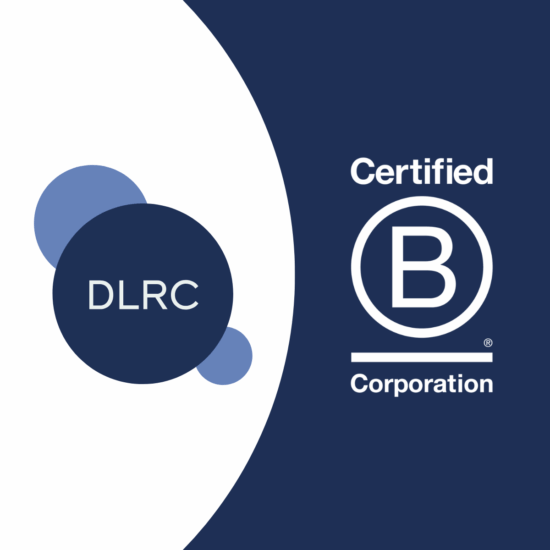Press Release: DLRC Group Becomes a Certified B Corporation
Published Dec 02, 2025
Published 29th May 2025

Many startup companies developing medicinal products, medical devices, and cosmetics often delay defining the regulatory strategy. They usually add this task to their ‘to-do’ list for the distant future. Many newly formed companies may view regulatory affairs primarily as a compliance function or a box-ticking exercise. They complete it much later in development, for example, just before applying for marketing authorisation.
The objective of this article is to outline how using the right regulatory strategy can help speed up development. It can lead to faster approvals and thereby generate greater revenue and value.
In today’s complex market, it is vital to make the right regulatory choices at key milestones and have a well-planned and solid regulatory strategy. This will likely to increase Net Present Value and global revenue potential. This also translates into increased investment potential and could result in months or years of market advantage.
It is no secret that drug discovery and development is long, expensive and a risky business. It is estimated that 90% of products in clinical drug development fail, with an average cost of $1-2 billion.
According to a report by Startup Genome, 9 out 10 ten startup companies do not make it. According to a 2021 report from CBInsights, the most common reason startups fail is running out of funding and/or being unable to raise new capital. Several other reasons followed, including flawed business models, competition, regulatory, and legal hurdles.
Drug development is one of the most heavily regulated industries globally. Navigating the complex and evolving global regulatory environment, requirements, and legislation can be a daunting concept for many startup companies. Funding is usually very tight. Therefore, it is important to understand the essential versus nice-to-have regulatory activities and to define the regulatory ‘roadmap’ to approval.
It is important for startup companies to understand the key differences in global regulatory environments. This will help them identify opportunities to speed up and de-risk development, thereby accelerating market entry.
Having an understanding of the regulatory roadmap will help companies navigate the complex global regulatory milestones, requirements, and processes. This will help companies make the most of the various initiatives and opportunities offered by regulatory agencies.
Companies should develop and maintain close relationships with key regulatory agencies. They should also alter direction based on their feedback, new legislation, and/or emerging data early on, rather than leaving it to a late stage.
There is a range of incentives on offer for a company to incorporate into their regulatory roadmap, such as accelerated approvals, increased patent life, additional market exclusivity and decreased or waived fees. It is difficult to quantify the return on investment. However, assuming a product would achieve $100M per year peak sales, a regulatory strategy that saves 6 months in time to market will result in a gain of $45 to $60 million dollars net present value. This happens due to earlier revenue, optimised patent protection period, increased selling time and establishing a market position before competitors.
“For startups the most important thing is to not waste time and money and if you have a clear plan on what you need to do, you can avoid both of those things. From a regulatory point of view, you also don’t want to get a significant way down the line and realise that there is a fundamental problem with your product because you haven’t thought about the regulatory strategy.
For example, if you are developing a drug that is for children and you don’t define your paediatric strategy early in the in the process, conducting a study that does not meet the requirements of the EMA’s Paediatric Committee may prevent your product from getting approved”.
“Time and money are everything for a startup. If you don’t think about your regulatory pathway early, you risk going down the wrong route, designing studies that won’t meet regulatory expectations, or missing key opportunities like early advice or incentives. A good strategy upfront helps keep development focused, lean, and aligned with what regulators actually want to see.
Regulatory affairs aren’t just about compliance and managing risk. Regulatory is definitely about managing risk, but it’s also highly strategic. It shapes how you develop your product, how quickly you can get to market, and even how attractive you are to investors. If you’re thinking proactively, regulatory becomes a real driver of value – not just a box-ticking exercise”.
The different regulatory frameworks globally may influence a startup company’s decision on where to initiate and conduct clinical studies, where to make an initial first marketing authorisation application and ultimately where to launch their product.
In the US, the Food and Drug Administration (FDA) is a single regulatory agency which handles everything from the start i.e. first clinical trial, through to post approval activities.
On the other hand, in the EU, there is a regional body, the European Medicines Agency (EMA) and national regulatory agencies for each of the 27 member states. Although a central submission process (Clinical Trials Information System or CTIS) now coordinates clinical trials, companies should still consider national factors. This is because each Member State ultimately decides whether to approve conducting the trial in their country. Depending on the type of product under development, companies can seek marketing authorisations through centralised (i.e., pan-EU), decentralised (i.e., involving a subset of EU member states), or national authorisation procedures.
Following its departure from the EU, the UK’s Regulatory Agency, MHRA, has its own national procedures for clinical trials and marketing authorisation approval.
In general, each Regulatory Agency issues its own guidance. Differences in data requirements and approaches exist between the US, EU and UK regulatory agencies.
Understanding the regulatory strategy early in product development helps companies to make the right choices. Whether that’s selecting the appropriate clinical endpoints for clinical trials, deciding when to engage with regulators, or understanding what is required for planned target market(s). This means fewer surprises, less duplication of work, and a smoother development path. Ultimately, this saves both time and cost, which are critical for a startup company. A clear regulatory roadmap shows investors that companies have thought about the risks, the timelines, and the major hurdles. It builds confidence. Furthermore, hitting early regulatory milestones, such as obtaining scientific advice, orphan drug designation or expedited program designations, can significantly boost credibility and valuation.
It is also essential to define the target product profile early, to map out the desired marketing claims so that each clinical study and outlay of investment is designed to drive the programme forward. The product development programme ultimately feeds into the Summary of Product Characteristics (SmPC) and United States Prescribing Information (USPI). In Europe, it’s also now a requirement for Advanced Therapy Medicinal Products (ATMPs) and oncology products to determine the value for payers with the submission of the Joint Clinical Assessment (JCA) during the initial marketing authorisation application.
“Having worked in Big Pharma, they’re always looking to close the white space between different studies, for example. If you spend some time looking at your regulatory strategy, you might discover that you could do a phase 2-3 combined study. You might discover that you could add in different endpoints in your study which may mean that you don’t have to conduct a second study. If you’re considering seeking scientific advice, making sure that you’re asking all the appropriate questions in one go instead of doing things sequentially. For rare diseases, it is a good idea to ensure that you have an orphan designation in place before you go for scientific advice as the (significant) fee is waived for orphan products”. Dianne Lee, CEO DLRC.
“We’ve seen some companies spend years and millions on studies, only to find out the data won’t support approval because they used the wrong endpoint or missed a key regulatory requirement. This can lead to losing a market or a significant delay to patient´s access to new therapeutic options. On the flip side, companies that engage early – especially through scientific advice – tend to avoid those pitfalls. They may still face challenges, but they’re better prepared and more resilient. Investors want to know you have a realistic plan to get your product to market. A clear regulatory roadmap shows them you’ve thought about the risks, the timelines, and the major hurdles. It builds confidence. And hitting early regulatory milestones—like scientific advice or orphan designation—can significantly boost your credibility and valuation”. Wafa Bouaziz, MD of EU and US Affiliates, DLRC.
Startup companies in the EU, UK, and US should understand the expedited programmes on offer and the criteria they need to fulfill to gain access to these programmes. By leveraging these opportunities, companies can achieve significant advantages. These advantages include earlier market entry, extended effective patent life, and enhanced positioning with investors or potential partners.
In the US, there are programmes such as Fast track or Breakthrough therapy designation, priority review, accelerated approval, rolling review and real time oncology review. In the EU, the European Medicines Agency (EMA) offers the Priority Medicine (PRIME) scheme, accelerated assessment, conditional and exceptional circumstances approvals. The UK, the Medicines and Healthcare products Regulatory Agency (MHRA) offers the Innovative Licencing and Access pathway (ILAP) and the International Recognition Procedure (IRP). Products with ground breaking potential can aim for Breakthrough Therapy designation, ILAP, and PRIME schemes. If companies are developing a product anticipated to treat a rare disease, the EU, UK and US offer Orphan Designation schemes with associated incentives.
There are also various opportunities to obtain regulatory and market access advice. A key aim of these interactions will be to inform clinical study design. In particular, they seek to gain consensus on the patient population, endpoints, need for comparators (e.g. placebo, active or both), and the clinical and statistically relevant differences to be demonstrated. Sometimes, the regulatory requirements do not align with what payers and the market require. For example, placebo-controlled studies may be acceptable for regulatory approval, but pricing and reimbursement bodies may require comparator data.
In summary, the programmes highlighted above include enhanced guidance and support from regulatory agencies to facilitate optimal and efficient product development and to help companies navigate the route to market. This is usually in combination with financial incentives such as reduced or waived regulatory fees for advice or marketing applications.
In general, the earlier a company begins to consider their regulatory roadmap, the better. Even in the earliest stages of development, various programmes exist at the Agencies to support innovations. In the EU, the EMA offers support to micro, small and medium-sized enterprises (SME). This allows SMEs to gain access to significantly cheaper EMA scientific advice or free advice from the EMA’s dedicated SME office.
The EMA also has an Innovation task force that is available for companies to use to gain insight into how their novel products, platforms and technologies will be regulated, and to have initial discussions on regulatory requirements. The UK and Irish agencies also have innovation offices which offer guidance. In the US, the FDA offers Initial Targeted Engagement for Regulatory Advice (INTERACT) meetings which are an opportunity to meet with FDA at an early stage of development, usually before the milestone of designing and conducting definitive toxicology studies, as well as other opportunities to meet at key milestones such as end of phase and, pre-licencing application.
In the EU, there are opportunities to meet prior to submitting clinical trial applications to confirm data requirement, to support trial and protocol design, and then throughout product development.
The following examples illustrate the importance of defining the regulatory strategy at an early stage of product development:
Proven specialists in global product development and regulatory affairs, DLRC Group’s colleagues provide startups with transparent, capital-efficient regulatory solutions to help companies attract investors while accelerating their path to approval. Partnering with experienced, reliable and proactive experts will help companies to navigate the landscape efficiently and effectively under increasing pressure in terms of compliance demands, intense competition, fiscal pressure and skill shortages.
From an investor’s perspective, they are looking for a company that can call upon an experienced team with a track record of successfully developing a well-constructed Target Product Profile, supported by a coherent regulatory and development strategy.
Positive feedback from regulatory agencies, solid plans as back-up in case you hit roadblocks, and honest communication about regulatory risks is critical. Unawareness of regulatory requirements, untested regulatory approaches, and lack of early engagement with regulators discourage investors. Integrating the regulatory strategy early in the development of a product will ensure that regulatory agencies are content with the quality, safety and efficacy, payers have evidence of value for money, and investors understand the costs and route to market.
DLRC has recently launched ‘The Regulatory Catalyst’, a transparent, value-driven package that delivers expert regulatory guidance to accelerate market entry. Whatever your objective, challenge or situation, DLRC can provide holistic strategic support with a focus on key regions (US, EU, UK).</p>
Companies can choose from options such as:
“DLRC acts like an extension of your team. We help you build a tailored regulatory plan that aligns with your product, your market, and your business goals. Whether it’s advising on study design, handling interactions with agencies, or planning submissions, we bring the experience and flexibility that early-stage companies need. We’re there to guide you from concept to approval—and make sure the regulatory side supports your success, not slows it down”. Wafa Bouaziz, MD of EU and US Affiliates, DLRC.
In summary, devising a regulatory strategy that integrates development and commercial perspectives can drive value creation and help fulfil the product’s full potential. Companies must time and plan regulatory interactions and decisions well to ensure the advice is beneficial and does not destroy value by creating barriers, as these interactions are critical to building value.
There are opportunities across markets to accelerate development and careful assessment of which strategy best fits your company and product goals is needed. A coherent regulatory strategy, supported by high quality documentation, can be a key differentiator for potential development partners and investors alike.
DLRC provides startups with transparent, capital-efficient regulatory solutions helping to attract investors while accelerating the path to approval. DLRC’s global team has guided numerous startups from pre-clinical to market success. Contact us at hello@dlrcgroup.com to find out how we can support you.

Published Dec 02, 2025

Published Nov 14, 2025

Published Oct 20, 2025

Published Oct 01, 2025

Published Oct 01, 2025

Published Oct 01, 2025

Published Oct 01, 2025

Published Oct 01, 2025

Published Sep 29, 2025